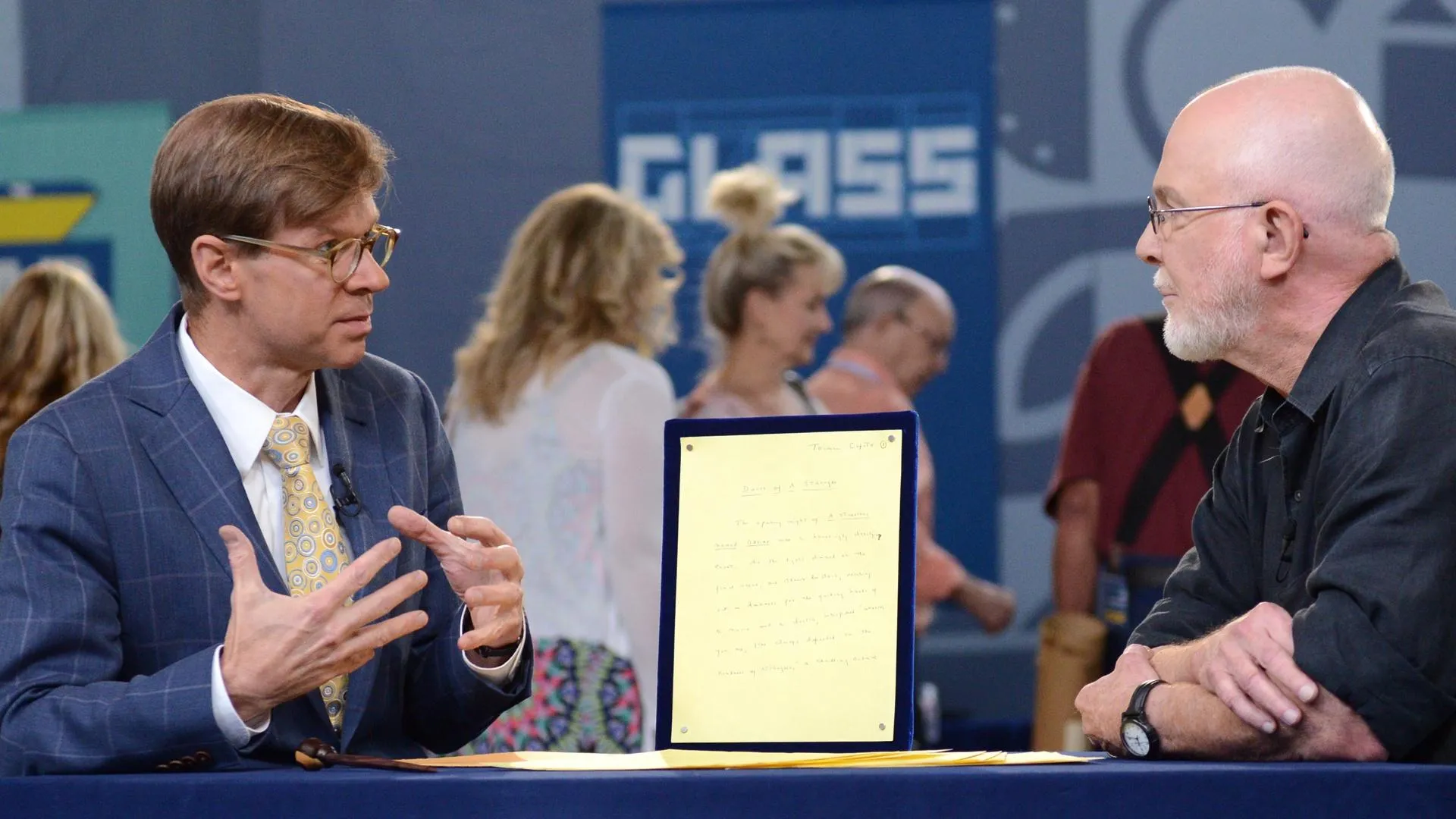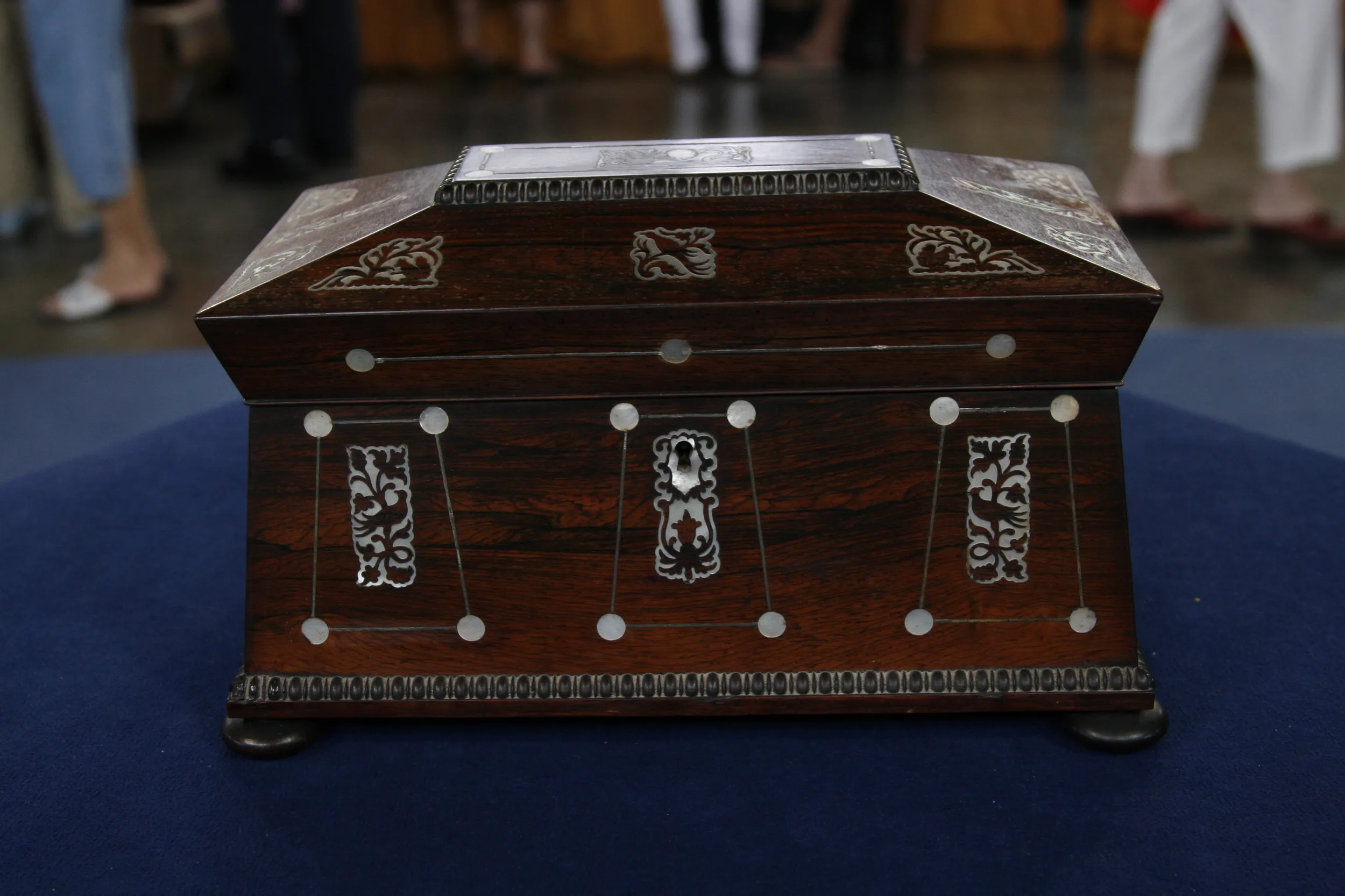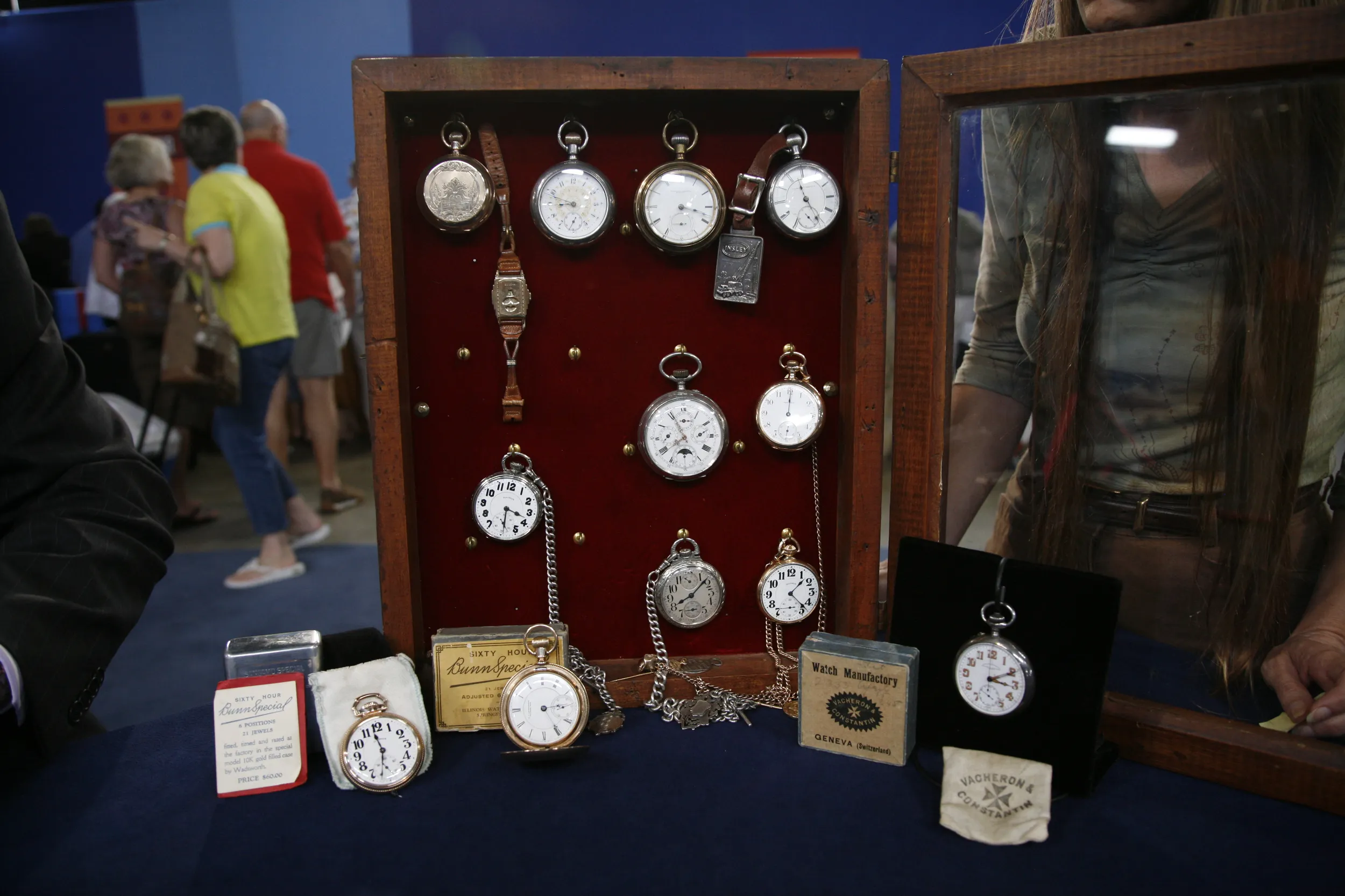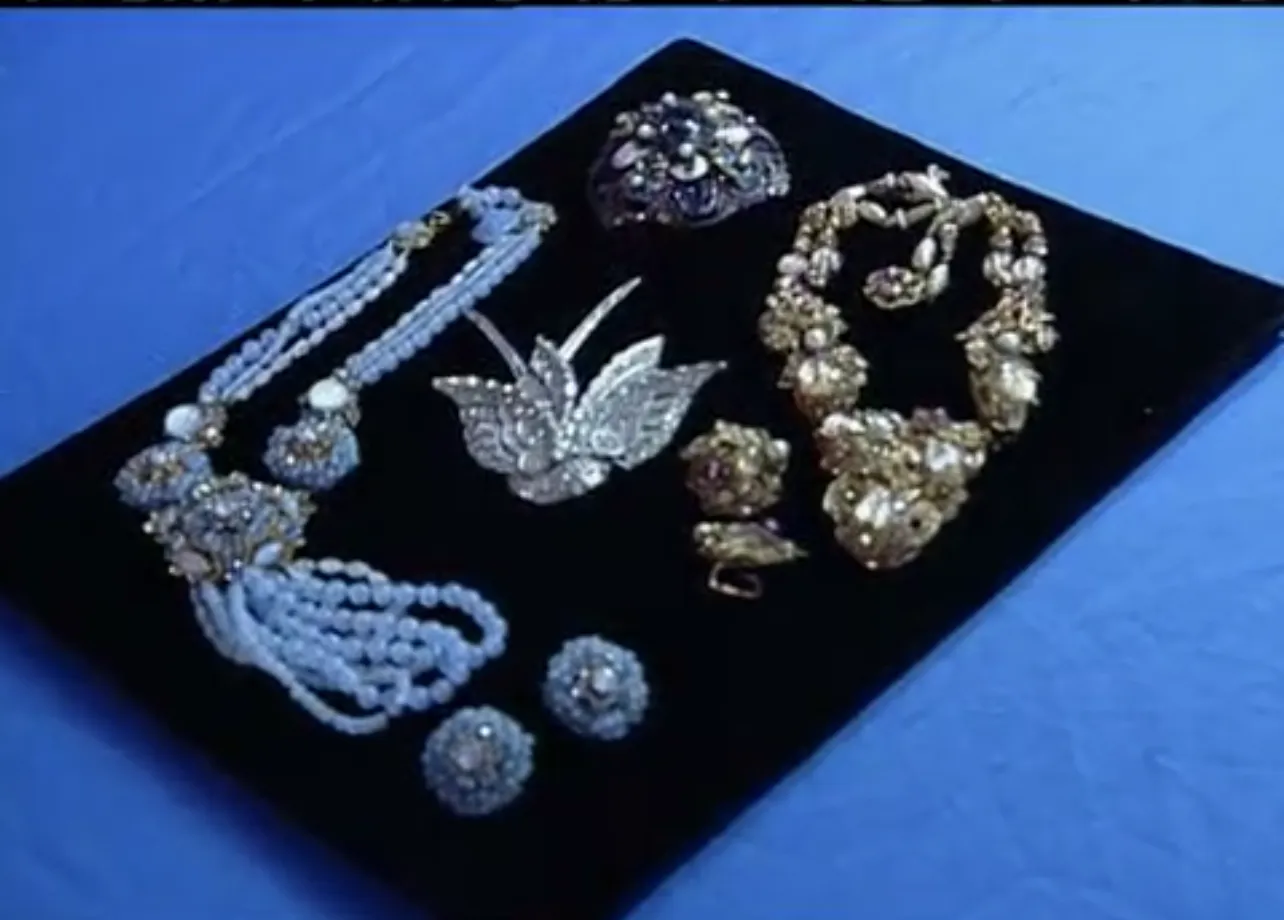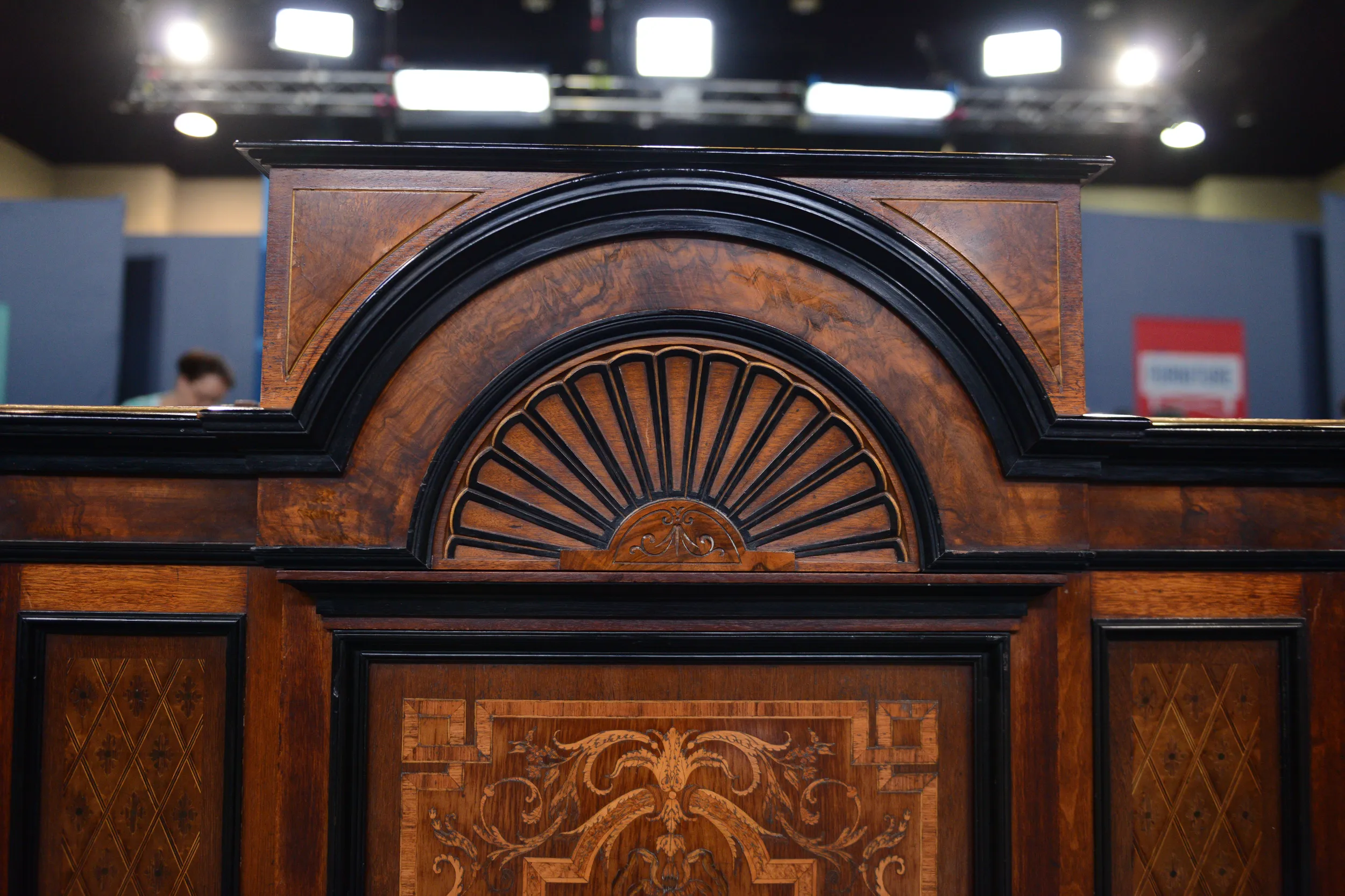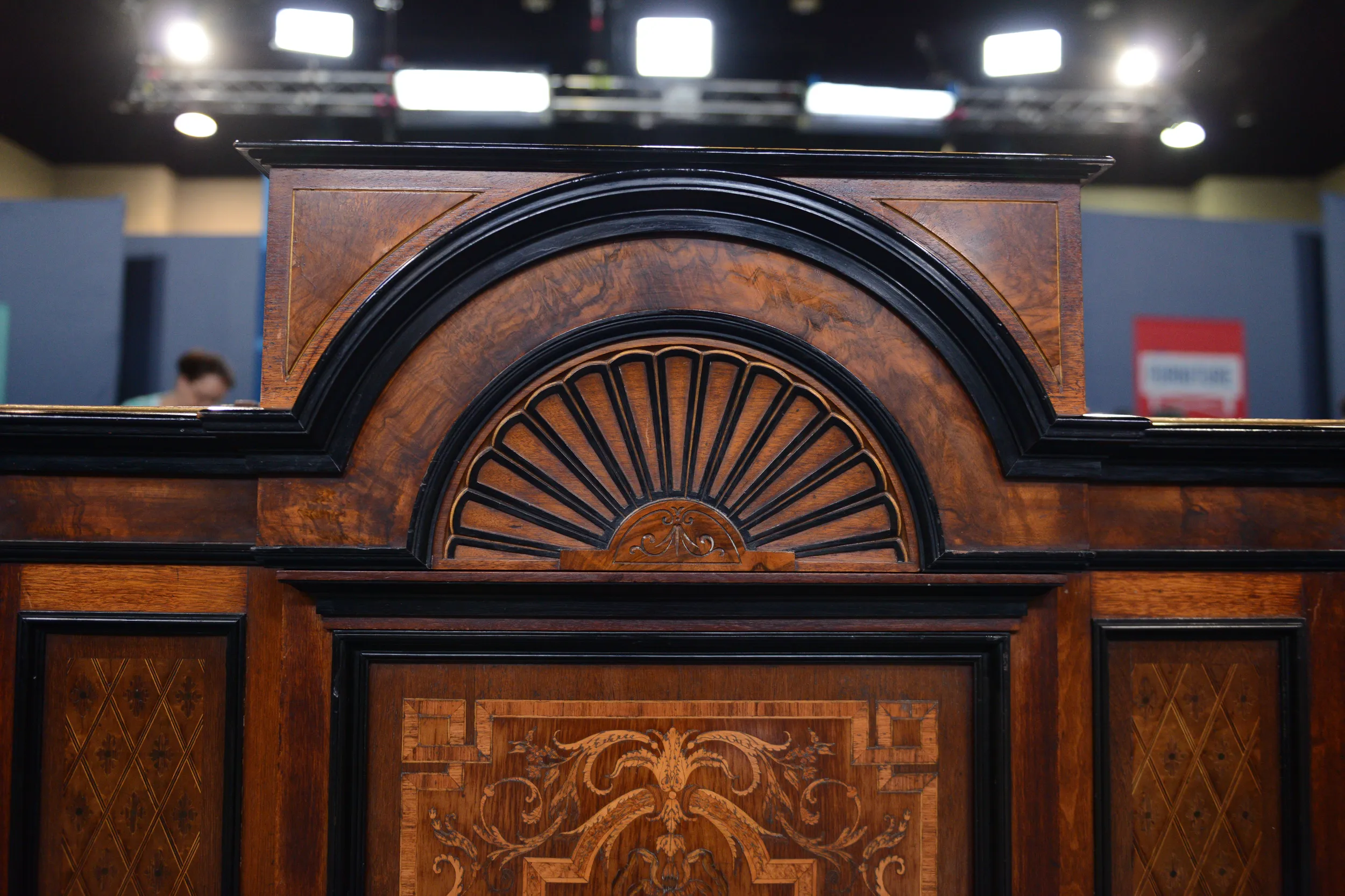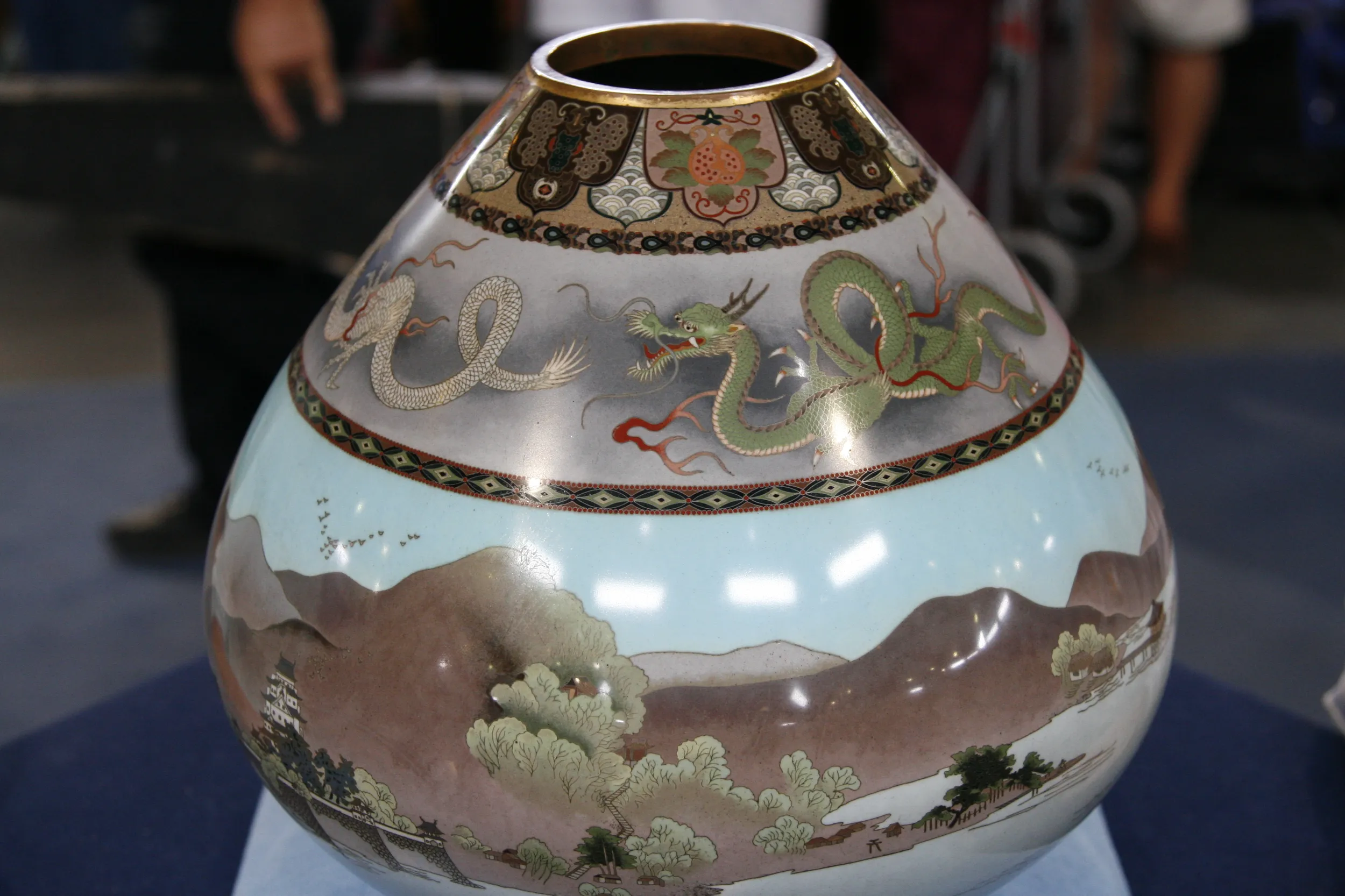GUEST: This piece was one of a pair that was in my great-grandparents' home. My grandmother was the older daughter, she got one, and the son got another, and I just thought it was such a beautiful piece, I wondered what the origin was and what you could tell me about it.
APPRAISER: I take it your family was rather affluent.
GUEST: Well, we're not anymore! (both chuckle) Whatever valuables are left are all in furniture.
APPRAISER: Okay, it's a very elaborate cabinet. Its sole purpose is basically to display works of art. So it could go into a parlor. I'd typically call it a parlor cabinet. We can see by the decoration, it has a combination of gilt incise, ebony, walnut, burl walnut, and a marquetry panel-- all traits that are not just generic cabinet forms. These are motifs and decorations that would have been applied by a cabinetmaker. And when we open the front door, we can see that it's lined with bird's-eye maple. Again, another hallmark of a cabinetmaker, particularly those affiliated with New York cabinetmakers. And when we take a look at the back, we can see again that that's accented once more with dovetails and paneled backs. So it has all the hallmarks of a New York-made cabinet piece. But since there's 5,000 cabinetmakers active in New York, oftentimes we're just left with... well, it resembles the work of this maker or that maker.
GUEST: Uh-huh.
APPRAISER: In this case, we know exactly who made it. J. Ziegler. J. Ziegler was a very obscure maker today, but he was a prominent maker in his day.
GUEST: Uh-huh.
APPRAISER: He started business in New York around 1850, and he concluded about 1878, but post-Civil War furniture, basically 1865 to '71, was sort of his production. And he had a gentleman working for him by the name of William Baumgarten, and William Baumgarten left him in 1871 to go to work for a firm called Herter Brothers, who was the leading decorator, and I think that really set his demise. So he was competing with the most sophisticated interior decorators and cabinetmakers active in New York at that time period. So what we have is a piece of furniture that is very historical, and that it gives us a record of his work and there are very few examples of his work. Sometimes history doesn't always correspond to its value, however. Auction estimate would be $3,000 to $5,000.
GUEST: Okay.
APPRAISER: And certainly could go more than that. I would consider it a conservative estimate.
GUEST: Well, that's excellent. Is it more valuable as a pair, if you had both of them?
APPRAISER: It would be, and I think that's a very uncommon thing. If we had the pair offered at auction, we'd probably put $8,000 to $12,000 on them as a pair.
GUEST: Okay.

